
量子效率测试仪
PL/EL一体机
Sinton硅片少子寿命测试仪
Sinton硅块少子寿命测试仪
绒面反射率测试仪
3D共聚焦显微镜
清洗制绒工作站
在线四探针方阻测试仪
全自动扫描四探针方阻测试仪
在线薄膜厚度测试仪
晶化率测试仪
Horiba显微共焦拉曼光谱仪
傅里叶红外光谱仪
霍尔效应测试仪
分光光度计
全光谱椭偏仪
Horiba椭圆偏振光谱仪
TLM接触电阻率测试仪
超景深显微镜
网版智能影像测量仪
全自动影像测量仪
卧式拉力机
电池片稳态光衰老化试验箱
电池片紫外老化试验箱
电池片拉脱力综合测试仪
外观检验台
湿漏电测试系统
组件实验室EL测试仪
紫外老化试验箱
稳态光衰老化试验箱
电流连续性监测系统
PID测试系统
旁路二极管测试系统
LeTID测试系统
反向电流过载系统
脉冲电压测试系统
绝缘耐压测试仪
接地连续性测试仪
绝缘耐压接地测试仪
湿热环境试验箱
湿冻环境试验箱
热循环试验箱
动态机械载荷测试机
静态机械载荷测试机
冰雹冲击试验机
引出端强度试验机
霰弹冲击试验机
抗划伤(切割)测试机
剥离试验机
万能材料试验机(单臂)
万能材料试验机(双臂)
光伏玻璃透过率测试仪
醋酸测试试验箱
交联度测试系统
二极管接线盒综合测试仪
落球冲击试验机
半自动四探针
全自动探针式台阶仪
多通道太阳能MPPT系统
Horiba稳瞬态荧光光谱仪
钙钛矿P1激光划线测试仪
钙钛矿在线膜厚测试仪
钙钛矿工艺检测工作站
手持式IV测试仪
便携式EL测试仪
手持热成像测试仪
户外组件IV测试仪
户外组件多通道测试系统
光伏逆变器电能质量测试仪
无人机EL检测仪
优化太阳能组件性能:美能光老化稳定性试验箱在环境模拟中的关键作用
日期:2024-07-17
在太阳能技术领域,组件的性能和耐久性测试是确保产品可靠性和效率的关键步骤。为了准确评估太阳能组件在真实环境中的表现,模拟实际阳光和环境条件成为了一项必不可少的测试过程。美能光老化稳定性试验箱通过高精度的控制系统和先进的技术,精确模拟各种气候条件下的太阳光照射,揭示组件在实际应用中可能遇到的各种问题,如热斑效应和环境因素影响。本文将深入探讨这一设备的功能和应用,以及如何通过科学的测试方法提高太阳能组件的可靠性和性能。
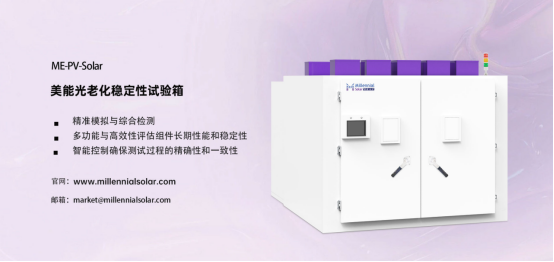
模拟实际阳光和环境条件对于测试和验证太阳能组件性能的重要性体现在多个方面.
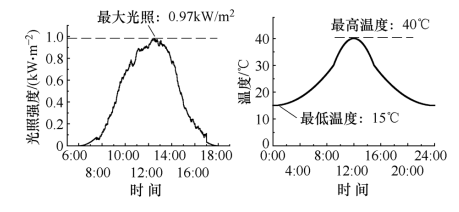
在实际的户外条件下,光伏组件的输出特性依赖于周围环境,包括温度、灰尘和遮荫等因素。这些因素都会影响光伏模块的最大功率点和能量产量预测的准确性。因此,通过模拟实际的阳光和环境条件,可以更准确地预测和评估光伏模块在真实世界中的表现。
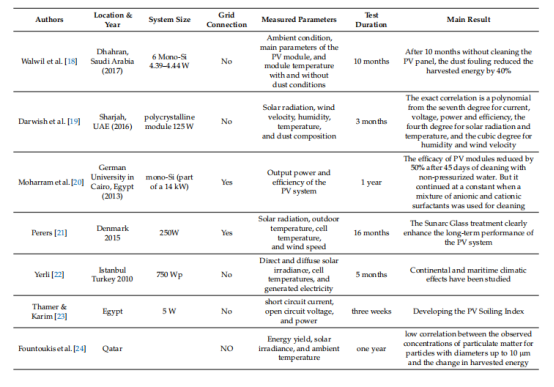
影响PVPS性能的环境因素调查
如针对组件的环境测试影响测试验中,研究学者针对灰尘堆积对光伏系统性能的影响展开试验。结果表明,粉尘积聚率主要取决于场地的天气条件。例如,在科罗拉多州,粉尘沉积速率为1–50 mg·m−2·天−1埃及则为150–300 mg·m−2·天−1。在实验期间,粉尘表面密度增加到6.0986 g/m2,这导致功率输出降低 21.47%。通过试验研究证明光伏组件受环境影响等客观条件限制较大,积聚则会减少到达电池表面的阳光量,进而降低发电效率。因此,在实际测试中考虑这些环境因素对于预测和验证组件的性能至关重要。组件热斑耐久性试验
组件热斑耐久性试验是一项关键的测试,用于评估太阳能组件在面对局部高温(热斑)时的性能和耐久性。这种测试在太阳能行业中非常重要,因为热斑现象可能导致太阳能电池的加速老化甚至损坏,影响整个系统的效率和寿命。
热斑现象:热斑现象是光伏组件在实际应用中非常普遍的一种效应,它严重影响太阳电池的性能和寿命,并具有一定的危险性。热斑效应主要是由于光伏组件中的某些电池片被遮挡或存在电池缺陷等原因,导致这些电池片的电流与周围电池片出现失配,从而产生局部高温现象。这种局部高温不仅会导致组件发电效率下降,还可能使组件封装材料熔化变形或烧毁,甚至引发火灾等不可逆损坏,严重威胁光伏发电系统的稳定性与安全性。

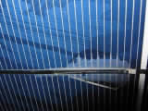
太阳电池出现热斑效应损坏图片
热斑效应的成因主要包括电池间显著温差、电池串失效、玻璃与电池碎裂等不同类型的热斑。此外,反向漏电流的存在也是导致热斑的重要因素之一,尤其是在阴影遮挡环境下,被遮挡组件区域的温度会随着太阳电池反向电流的增大而升高。即使在完全无阴影遮挡的情况下,光伏组件也可能因组件封装过程中存在的虚焊、空焊等接触不良连接点,形成微小间隙,引发电弧效应,从而导致严重的热斑失效。
美能光老化稳定性试验箱主要用于模拟太阳电池或组件在经受室外阳光条件暴露后的能力,揭示由于缺陷电池片、不匹配电池片、入射光遮挡或污染引起的组件热斑耐久性试验,确定组件承受热斑局部加热效应的能力。
美能光老化环境试验箱
主要用于模拟太阳电池或组件在经受室外阳光条件暴露后的能力,揭示出实验室试验中测不出来的综合衰减效应。
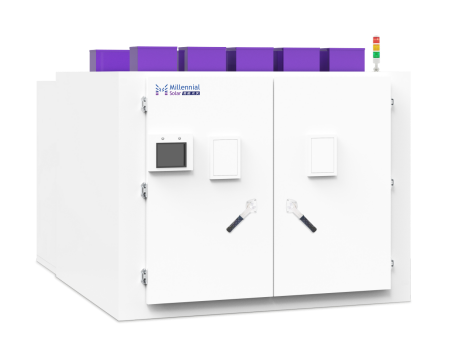
精准模拟与综合检测
多功能与高效性评估组件长期性能和稳定性
智能控制确保测试过程的精确性和一致性
通过高度精确的环境模拟技术,美能光老化环境试验箱不仅能够揭示出潜在的衰减效应和热斑问题,还能为太阳能组件的设计优化提供科学依据,从而提高产品的可靠性与效能。在当前太阳能技术迅速发展和市场对高性能产品需求不断增长的背景下,确保组件在各种气候条件下的性能稳定性至关重要,推动行业持续创新和技术进步美能光伏一直在努力。




































































